2012 St Louis Reunion Guest Speaker: Colonel William (Bill) S. Reeder Jr Ret.
361st AWC "Pink Panthers" - AH-1G Cobra Pilot - Prisoner Of War
Colonel William (Bill) S. Reeder Jr Ret.
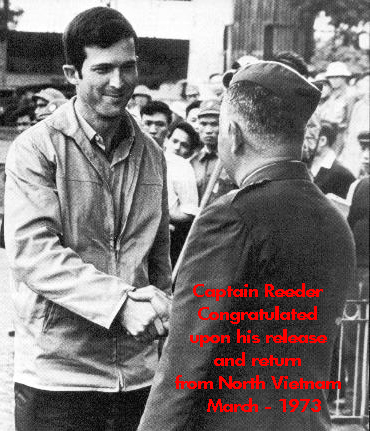
|
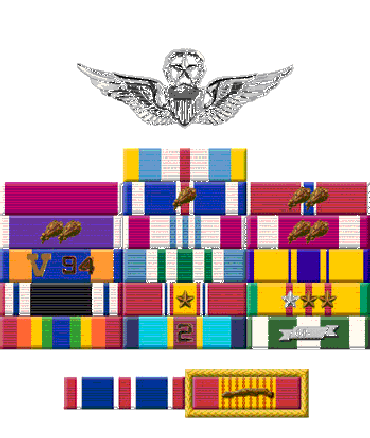
|
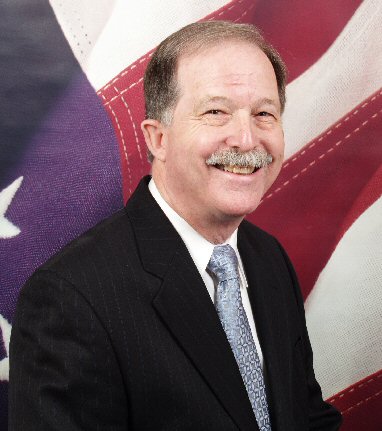
| 1973 - Captain William (Bill) S Reeder | William (Bill) S Reeder Awards | 2012 - Colonel William (Bill) S Reeder Ret. |
As Published in Field Artillary Magazine, 1974 NOV/DEC Issue, PAGES 44-49Captured. . .In May 1972 I was completing the fifth month of my second tour of duty in the Republic of Vietnam. I was assigned as a platoon commander to the 361st Aerial Weapons Company "Pink Panthers." We flew Cobras and were based at Camp Holloway near Pleiku. The military situation in the Central Highlands was serious and getting worse daily. No American ground combat forces remained except for a handful of security elements. The remaining Army aviation was supporting Vietnamese units, convoys, other aircraft and destroying trucks and tanks. Since April the enemy had captured all fire bases north of Kontum City, the installations at Dak To and Tan Can and controlled all roads and territory north of Kontum except three widely scattered camps at Polei Klang, Ben Het and Dak Seang. Within weeks, many aviators and crewmen were wounded, several aircraft were shot down and a number of aviation and ground personnel had been killed or were missing. The communist spring offensive of 1972 was on. On 9 May I awoke as usual at 0500 and began preflight at 0530. I was flight leader for a flight of two Cobras. Our assignment was to standby at Holloway and await a mission which would probably be a TAC-E (tactical emergency) if today was to be like so many others in recent weeks. My copilot/gunner was 1LT Tim C. who had just come to the Panthers a few weeks earlier and had been flying with me nearly every day since. He was eager and extremely competent and in a very short time had proven himself to be one of the best frontseaters in the unit, besides being a likeable guy. My wingman was CW2 Steve A. He had just over two weeks left until his deros and I planned this to be his last mission. Steve and I had been on many, many missions together and had worked well as a fire team in some very stressful combat. In his front seat was CPT Bob G., another platoon commander who was filling in with us today. Bob and I knew each other from OCS at Fort Sill where he had been a few classes behind me. This was the team and we had our assignment—standby. Shortly after sunrise we received a mission. "TAC-E! Tanks at Polei Klang. You will be covering Hawks Claw. Contact him on his push when airborne." Hawks Claw was the call sign given to the UH-1 tow missile aircraft that had just come to Vietnam as a tank killer. From this day on they would establish quite a record. We arrived at Polei Klang to find the tanks temporarily withdrawn into hide positions. As we began our search for the concealed machines, we received a message to divert to Ben Het several miles north where tanks were coming through the wire along with masses of infantry, and where American advisors were on the ground. At Ben Het we saw tanks, several of them in the open around the camp. Hawks Claw maneuvered and rolled in through clouds which were getting thicker and lower. Fifty-one caliber fire came up from numerous locations. TOW scored and pulled off . . . all back to Kontum to refuel and rearm. The clouds were building and the holes were becoming fewer and smaller. We went back out on top and found a large hole east of Ben Het to come through. The cloud bases were 1,500 feet above the ground. "Panther 36, this is Claw. Contact Rocket 44 on FM and cover him into Ben Het. He's making an emergency AMMO resupply." "Roger, Claw. You guys be sure to hold well to the east away from those 51s. We'll be back with you in a few minutes." I called Rocket 44 and found that he was inbound in a Huey probably being flown by a crew from the "Gladiators" (57th Assault Helicopter Company). They were about the best in the business and we had often provided their gun cover. The situation was not good. Tanks and infantry in the wire, 51s and small arms all around the camp and weather that would not allow us to cover the slick from above the clouds. Should we go in just below the clouds or on the deck? We would be great targets for the 51s if we flew just 1,500 feet; so in we came, low level (a sound tactic for this situation). The Cobras fired a clear path all around the slick. He made it in OK, kicked off his load and started out. Tracers were coming up all over. We turned outbound still shooting. A stream of big red tracers went by my right side, but was beyond turret traverse! "This is Panther 36 taking fire three o'clock . . . Taking hits, taking hits—we're going down." The bullets raked the aircraft. It felt like a jackhammer pounding along the side. We kept taking hits—from rear to front. Directional control gone, engine out, fire and rounds in the cockpit. I was hit, but it didn't seem to be bad. Collective was down, rotor rpm OK. Memory is vague from here. Pitch pull is difficult; probably hydraulic loss. We hit the ground hard, but we're upright; we can both get out. (I found out later from an eyewitness report that we came down turning and burning, impacting on the left side of the nose, then bouncing up, turning some more and down again.) Smoke and flames were filling the cockpit. I called to Tim. "Let's get out of this thing." (Paraphrased) "Roger that." Somehow I got out. I regained consciousness lying face down in the dirt hearing explosions and rounds cooking off behind me. I didn't know where I was or what had happened and I couldn't move. There was awful pain in my back. I tried to think. What had happened? I thought I had been shot down in a OV-1 Mohawk (which I had, three years before). "My observer is OK. He ejected before me." The pain in my back was terrible. I had to get help. I had to get to a hospital. I wanted to get to my radio. I tried to move my hands. I tried again. Finally, I could move my fingers and then my arms. With extreme difficulty I took my radio out and keyed it. Nothing. The on-off/volume knob had rotated on, and the battery was dead. (A "fine" new radio that had been procured to replace the old one. But the old type worked. It could not be jarred on accidentally while in the survival vest as this new type could.) What a sunken feeling. Momentary despair, but then a motivating thought. I couldn't just lie there or I'd be found by the enemy; I'd be killed or captured. I had to move. I got my helmet off and wiped my forehead. My hand came down covered with blood. It was all over my face, but I couldn't tell where it was coming from. Successfully rolling onto my side, I looked down and saw a small piece of metal sticking into my right boot. Now I tried to move my legs. They responded slowly, but I pulled the fragment out only to find it had gone through the boot and into my ankle. I crawled. I was moving! "I would get home," I thought. I crawled on. I had to get away from the enemy. My mind wasn't just right. What had happened? I began to realize that the Mohawk episode had been years before. This time I had been flying a Cobra. "A Cobra!" Where's my copilot? Where is the aircraft? And where was I? I didn't know. After coming to the edge of an open area I passed out again. Sometime later I was awakened by sounds of a helicopter. I used my signal mirror, but nobody came in for me. "Probably best," I thought. "No use losing another helicopter." I could hear weapons firing in every direction. Must be enemy all around me. Then it rained and I got wet and cold. I lay there thinking—trying to remember. Slowly things began to fall into place. I was really worried about Tim; I wanted to go back to the helicopter, but I didn't know where it was. I knew he had been conscious after we crashed and surely must have gotten out all right. He had a radio, too, and odds were that his should be working. Bombs started falling. I had to get farther away from this area. They would be bombing all around Ben Het tonight. I formulated a plan to travel southeast to Plei Mrong (southwest of Kontum). I figured the distance to be about 30 or 40 miles and thought I could make it within two weeks. Helicopters! I heard them coming in a short distance away. They must be getting Tim. Two choppers were now flying toward me. It appeared to be a flight of Cobras. Excitedly, I reached for my strobe light and turned it on. Surely they must see it. Then I saw the stream of minigun tracers coming right at me. I dropped the light and dove away. That was close—no more than a few feet. By early morning I was able to stand and walk for short distances, but the pain was terrible. I found to my dismay that I could not control my bladder. I got to the edge of a large field and rested. A FAC. I could hear an 0-2 aircraft approaching. As he came overhead, I shot a pen flare. He circled a few times, then another FAC showed up. Two of them in a big slow circle. I fired another flare. Tat-tat-tat. Some enemy had seen me and I was taking fire. I lay low for a few moments, but the rounds were zipping past me and I heard shouts getting closer. I dashed (seemed like a dash—probably more of a feeble hobble) away. About 100 yards away I crossed a small stream, followed a trail for a few yards and then plunged into the brush. I was as silent as possible. The communists crossed the stream and came down the trail firing at random into bushes. They passed me and continued. I moved on, staying off trails and traveling cross-country. I would have to eat something to keep me going. I found some good looking leaves and employed some old survival training. Eat a minute morsel and wait half an hour. If illness does not strike, eat a slightly larger portion and wait a like period. Then eat all you want. Leaves aren't too high in protein, though, so I supplimented my diet with ants. A Vietnamese Birddog (observation aircraft). Another pen flare. No luck. That evening I tried to get some sleep. There were B-52 strikes and other airstrikes most of the night. A few were almost on top of me. It rained again. I fell asleep in the mud. Morning began my third day in the jungle. It seemed my back hurt more than it had before, and now I could feel some cuts on my head and chin. But there was walking to be done, so I got to it. I was crossing an area of bomb craters when another FAC appeared. I began waving my arms. He circled. I thought for sure he saw me, and felt I was far enough from the battle at Ben Het to allow a helicopter to come in, but no helicopters came. Instead, a flight of F-4s was put in on my position. The FAC must have thought I was NVA. I dove into one of the existing craters and clutched the side. The world exploded around me, but I was untouched. The aircraft left and I continued my journey. I stopped for lunch under some bushes along the floor of a small valley. I wasn't very hungry, but I forced some nutrition down. There was something on my leg just above my boot that looked like a large swollen worm. I tried to flick it off, but it didn't budge. I grabbed it and tore it off. It was a leech. Travel is slow and difficult through the jungle. It is tiring and at times frustrating. The vegetation at this point was so thick I couldn't see more than a couple of feet. I moved on, determined to get home. I heard shouts just a few yards away. They were clear and sharp, and not in English. I crouched down and froze. In seconds there were five fatigue-clad NVA surrounding me with AK-47 rifles pointing at my head. My heart fell and I cried inside. As I raised my hands and stood up, I became a prisoner of war. That first day was one of fear and anticipation. I didn't know if they would let me live or kill me. From my point of capture I had been taken a few feet to a trail, then several yards to the edge of a complex of bunkers. The soldiers who captured me were young and seemed startled, a little afraid and very inquisitive. They even appeared to show some concern for my condition, giving me water, rice and even a cigarette. I must have been a sight—dirty, bloody, unshaven and in much pain. We communicated with gestures and some of them even cast pitiful smiles toward me. But if I thought this was to be representative of my treatment, I was wrong. Soon I was searched and had everything confiscated including my boots and socks. When they pulled the right boot off, I saw that my foot was caked with dried blood. That wound looked a little worse than I had thought. I did get to keep my flight suit. Some time later an English-speaking interrogator arrived on the scene. He was a jewel. By the time he finished with me that evening he had tied me to a tree (which was murder on my back), beat me and threatened to shoot me. I gave him nothing but my name, rank, social security number and date of birth. I was scared stiff, but refused to show it. These sessions went on for two days. At night, I slept in a muddy hole in the ground. On the third day, I was told to exercise, and then was given my boots back with no laces or socks. The interrogator arrived and told me I would travel for two or three days to an area safe from bombing and artillery fire. A rucksack of uncooked rice was put on my back. It was hard to keep from screaming. As I left with two guards the interrogator said to me, "Try to make it." Three agonizing days later (three days of dodging airstrikes, getting blisters, removing leeches, staying on my feet by what means I don't know and listening to my guards say, "Go quick or you die.") I arrived at my first real prisoner of war camp. The camp consisted of numerous bamboo cages surrounded by two 10-foot bamboo fences. The tops of the fences were sharpened and a punji stake moat was between the fences. I was to find out later there were about 300 South Vietnamese prisoners in this camp. I was taken to a pool in a small stream that ran through the camp and told to wash myself. This pool was used for bathing (infrequently), laundering, washing surgical instruments and for drinking water. When I finished I was put in a cage with about 26 South Vietnamese and my feet were put in wooden stocks. The cage had dimensions of 12 feet by 20 feet by 4½ feet. I lived like an animal in that camp for nearly two months. There were daily interrogation sessions for two weeks . . . then only once a week. We got a grapefruit-size ball of rice twice a day, and water. We were allowed out of the cage once a day to use the latrine, which was a mass of filth and flies. Rats ran over us at night. I was given no medical care and my ankle wound began getting infected. I was losing weight rapidly. I had heard there was another American in the camp and I told the interrogator I wanted to see him. "In time," I was told. Finally, I was moved to another cage and there I met CPT Wayne F., United States Army. Wayne had been shot down and captured about a month and a half before I was. He appeared to be in fair shape, but very skinny. I was soon to match him as I continued to suffer from the diet of rice. Then Wayne got dysentery. I thought he was going to die, but he pulled through after several bad days. We left that camp in July. Both of us looked like walking skeletons. We could barely walk, but were told to do our best as we were going to a new camp where the food would be better. They said the new camp was far and we might have to walk for as many as 10 days. It didn't take 10 days. To describe that journey from Northern Cambodia to Hanoi, North Vietnam, would take a book which I may write someday. It was a horror-filled march for the Americans who walked it. Death stalked the trail. For now, let me just say that it was the most terrible experience I have ever had. My back ached. I got dysentery. My leg became so infected that the communists were going to amputate, but tried penicillin first and it worked. Nightmares and strange dreams were my nightly companions. Wayne and I started that trip with 25 South Vietnamese officers. Wayne and four of the South Vietnamese died along the way. On 10 October I arrived at a camp in Hanoi known as "Plantation Gardens." The journey north was over. It had taken over three months. I was placed in solitary confinement for a few days and then moved into a room with seven other Americans. After the past five months, Hanoi was very nearly paradise, though this impression very quickly subsided. The food was better, though, and some medication was available. We had a fine SRO (Senior Ranking Officer) in COL Ted G. He gave us guidance and inspiration. But best of all was the companionship of other Americans. It had been about two months since I'd seen another American. Conditions at the Gardens had been improving drastically before I arrived, and they continued to improve after I got there. The end of the war was near. The North Vietnamese, through some strange logic, were trying to make a good impression on us at the end, hoping this would be the impression we would bring home with us. They were wrong. In mid-December the bombing started again. I didn't know what had gone wrong, but I was glad to see the United States showing her strength. The bombing lifted the spirits of most POWs. On 27 December 1972 we moved to the infamous Hanoi Hilton where I remained until my release on 27 March 1973. At the hospital in the Philippines I found that I had broken my back. I was treated for malaria and three kinds of worms—and I ate. But I still had some unfinished business. I wanted to find out how my copilot was. I had looked forward to having a drink with him when I got home. I couldn't believe the words coming over the phone. Tim died. He was picked up by the helicopters I had seen that first night, but was dead by the time they got him to the hospital. I hung my head. CPT William S. Reeder Jr., FA, is now assigned to the 9th Infantry Division, Fort Lewis, WA. (1974) Source: http://sill-www.army.mil/famag/1974/NOV_DEC_1974/NOV_DEC_1974_PAGES_44_49.pdf with Spelling errors corrected February 12, 1973 OPERATION HOMECOMING A C-141 (nicknamed the "Hanoi Taxi") airlifted the first American prisoners of war (POW) to freedom from Gia Lam Airport in Hanoi, North Vietnam. From 12 February to 4 April 1973, C-141 missions flew POWs home from North Vietnam as part of Operation HOMECOMING. American captives held by the Democratic Republic of Vietnam and the Provisional Revolutionary Government of South Vietnam were released. There were 579 men released in all, including 557 military personnal and 22 civilians. Also released were nine Americans held by the Pathet Lao, three Americans held by the People's Republic of China, and nine third-country nationals. The POWs were released in groups in March and April. The last two evacuation aircraft leaving Hanoi with POWs was 29 March 1973. All groups were flown to Clark Air Force Base for medical treatment and issuance of a new uniform before being flown to the U.S. to meet their families. There was one POW, Captain Robert T. White, who was not released until 1 April 1973, having been detained by a vindictive camp commander until that date. St Louis Reunion - An Interesting Possibility 361st AWC - CPT William (Bill) S Reeder 322 Days 170th AHC - WO1 Roger Alan Miller 1055 Days Both captured by the Vietcong (Peoples Provisional Government) and were listed by the United States with MIA status until their return from North Vietnam as part of the POW Homecoming prisoner release. They were held together at the same prisoner of war camp, and when I mentioned the possibility that Roger would also be attending the St Louis reunion in my email correspondence with Bill he was very happy to hear it, and that he was going to call Roger to see how he is doing... I am hoping we can enjoy the rare opportunity of having them both in attendance... Col William (Bill) S. Reeder Ret. Biography: William S. Reeder Jr. Ph.D. |
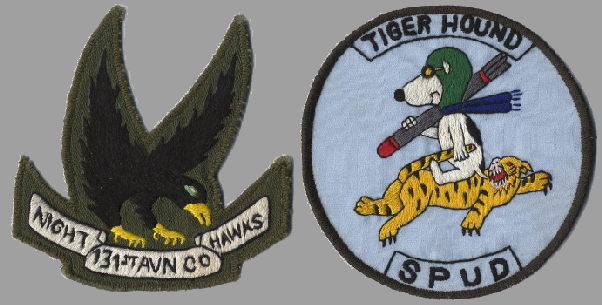
|
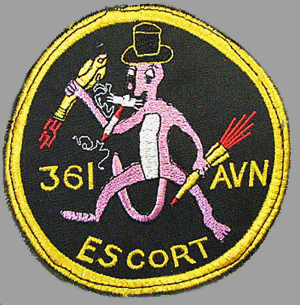
|
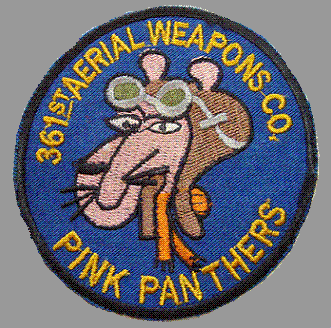
|
| 68-69 131st Aviation Company "Night Hawks" OV-1 Mohawk pilot | 71-73 361st Arial Weapons Company
"Pink Panthers" AH-1G Cobra pilot |
72-73 Captured and Held as POW (322 Days)
Released and returned in March, 1973 |
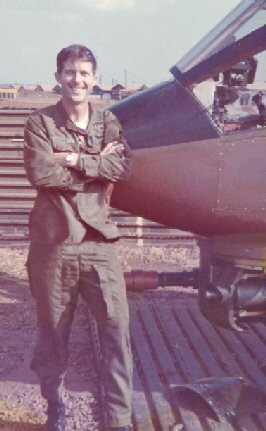
|
1955 Military Code Of Conductas prescribed by President Dwight D. Eisenhower, August 17, 1955 -and used during the Vietnam War The Code of Conduct is a six-article code that provides general guidelines for the daily conduct of all United States military personnel. It is especially applicable at times of war or imprisonment. (1) I am an American fighting man. I serve in the forces which guard my country and our way of life. I am prepared to give my life in their defense (2) I will never surrender of my own free will. If in command, I will never surrender my men while they still have the means to resist (3) If I am captured, I will continue to resist by all means available. I will make every effort to escape and aid others to escape. I will accept neither parole nor special favors from the enemy. (4) If I become a prisoner of war, I will keep faith with my fellow prisoners. I will give no information or take part in any action which might be harmful to my comrades. If I am senior, I will take command. If not, I will obey the lawful orders of those appointed over me, and will back them up in every way (5) When questioned, should I become a prisoner of war, I am required to give only my name, rank, service number, and date of birth. I will evade answering further questions to the utmost of my ability. I will make no oral or written statements disloyal to my country and its allies or harmful to their cause. (6) I will never forget that I am an American fighting man, responsible for my actions, and dedicated to the principles which made my country free. I will trust in my God and in the United States of America |
|
|
|
||
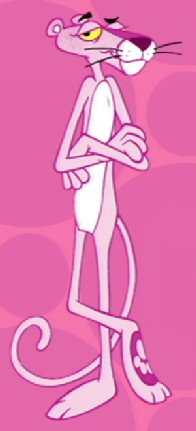
|
Eight Steps for Survival in a POW Camp by Cpt William S Reeder Jr(1) EAT. Sounds simple, doesn't it? But, when you've got to force down nothing but plain, boiled rice day after day, month after month, eating becomes a difficult chore. Some found death easier.(2) PRACTICE PERSONAL HYGIENE. When you are sick and starving, it is hard to motivate yourself to keep your body and your surroundings clean. Do the best you can with what you have. Filth leads to disease, and disease leads to death. (3) EXERCISE. Set up a daily exercise period. Do something. Even if you are in stocks and chains you can at least flex a few muscles and do some deep breathing. (4) DO NOT GIVE UP THE FIGHT TO STAY ALIVE. No matter how sick you are, how serious your wounds, or how hopeless the situation there is always a chance you can make it. Take that chance and, with your deepest courage, fight for it. (5) ESTABLISH COMMUNICATIONS WITH OTHER PRISONERS. Use your initiative and imagination to make contact with others, and then develop a chain of command. (6) FOLLOW THE CODE OF CONDUCT. You must know the Code before you find yourself in a prison camp. Then you should adhere to the articles as strictly as possible. (7) KEEP THE FAITH. Faith in your family, your religion and your country may be all that keeps you alive and sane. Hang in there; you are not forgotten. (8) MAINTAIN A SENSE OF HUMOR. This is difficult, but both possible and necessary. A bit of humor helps keep away fits of total depression, and remember, depression can kill. |